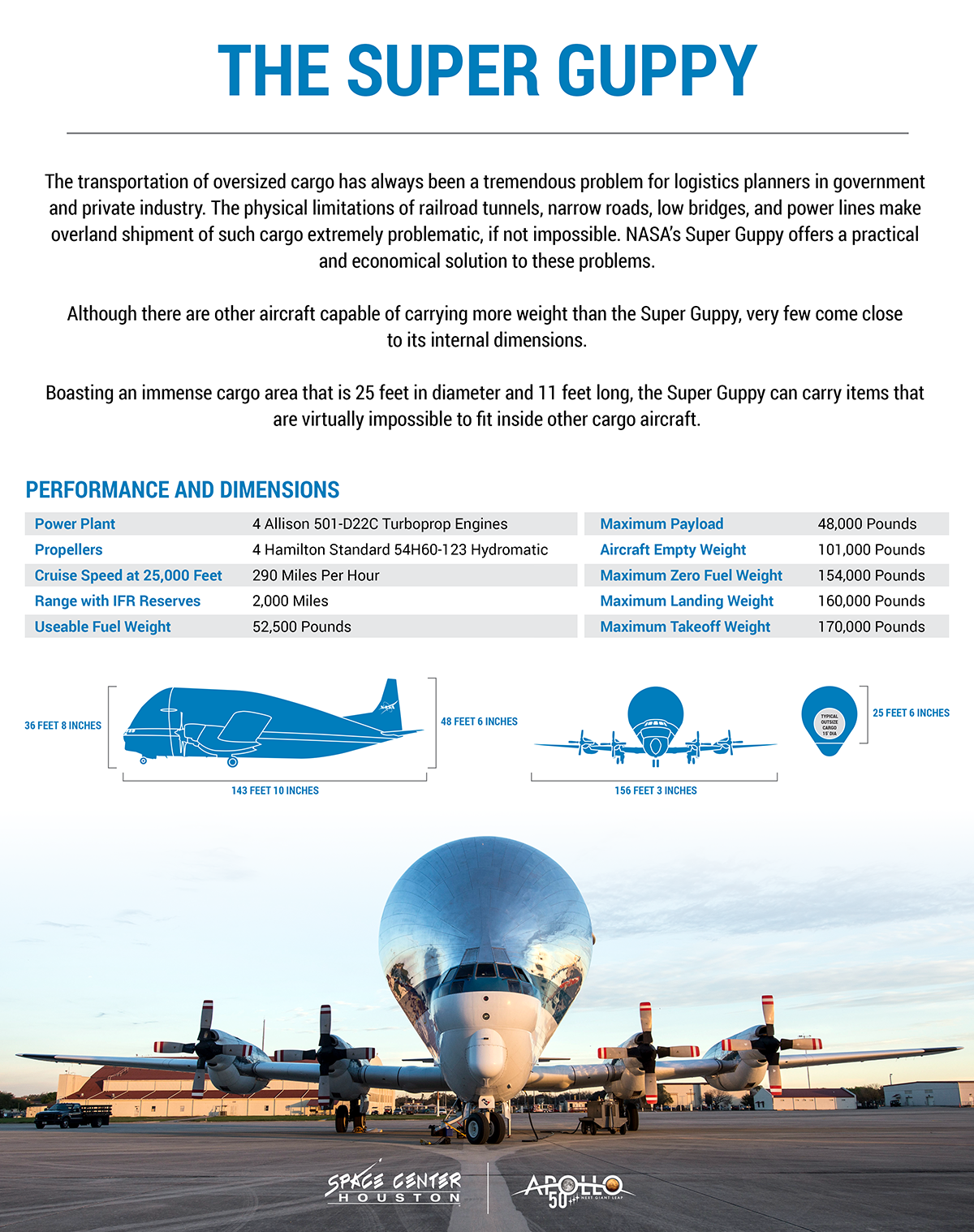
As part of the restoration of Historic Mission Control, conservationists sent the consoles from the room to the Cosmosphere in Kansas. How do you transport such large and cumbersome consoles while still protecting them as historic artifacts?
Enter NASA’s Super Guppy airplane. The Guppy was built to transport machinery that no other plane can carry.
Throughout its history, NASA struggled to carry cargo between different bases in the U.S. A normal airplane is not capable of loading the type of cargo NASA needs to transport. The physical limitations of railroad tunnels, narrow roads, low bridges, and power lines make overland shipment of such cargo extremely problematic. NASA’s Super Guppy offers a practical and economical solution to these problems. The Super Guppy has been on the job for NASA since 1965.
With a massive cargo area that is 25 feet wide and 111 feet long, the Super Guppy can carry items that are extremely difficult to fit inside any other aircraft. The maximum payload for the Super Guppy is 54,500 pounds, with a maximum range at maximum payload of 564 miles. Its cargo compartment has a usable volume of 39,000 cubic feet.
The Guppy is not able to carry as much weight as a normal cargo airplane, but it can load its cargo easily. Its front nose can be opened, giving the aircraft has an unobstructed loading area. The Super Guppy’s hinged nose opens 110 degrees for cargo loading. A control lock and disconnect system at the fuselage break allows the nose to be opened and closed without disrupting the flight or engine control rigging.
To get more details about this astonishing plane, check out our infographic below.









